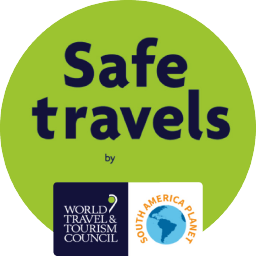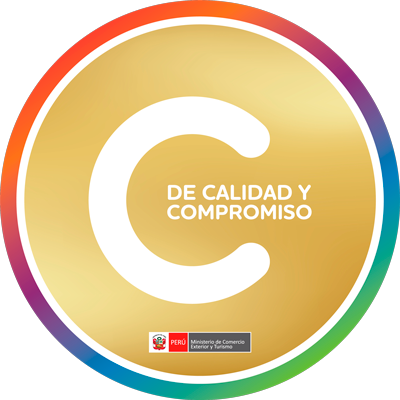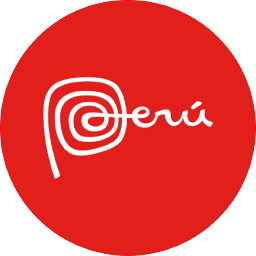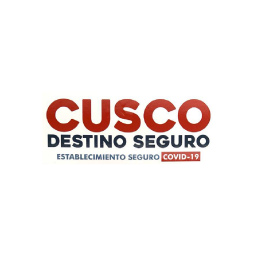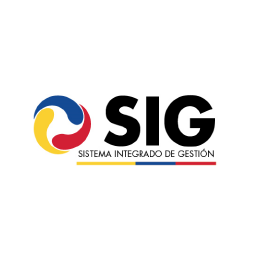
Lima – Peru
Capital with different faces /lima
It is in this metropolis city of almost 12 million inhabitants where you most of the time enter Peru.
By cruise in the harbor of Callao or by airplane in theinternational airport of Jorge Chavez. He was a Peruvian aviation pioneer. The airport is located in Lima at approximately 45 minutes from the colonial center or the commercial districts as Miraflores, San Isidro, etc. The Peruvian capital was established by the Spanish “conquistadores” in 1535. Lima soon became the commercial and administrative center of the Spanish empire in South America, bringing a period of prosperity to the city until an earthquake in 1746 destroyed all but 20 houses. Following this devastation the opportunity was taken to elaborately rebuild the city .The early 1990’s saw a low point in Lima’s history, as thousands of campesinos migrated to Lima fleeing the terrorist activities of the countryside and jungle, only to be caught up in a bombing campaign in the city. At this point it would have been hard to say anything positive about Lima. But Lima’s fortunes are on the rise and the historic center is being carefully restored, museums built, parks and gardens planted, the streets cleaned, police vigilance increased and terrorist activity eradicated.
It has five national Universities (including the Universidad Mayor de San Marcos, which is the oldest in the Americas) and seven private universities, attended by a total of more than 150,000 students. It has a rich culture and superb food. Lima is a metropolis of changes, place of contrasts and show case of all Peru. Lima is a city to love or hate, where you will find space and time for doing everything. Its nightlife is full of fun and joy, and as choices are wide, contact with nature is possible at one or two hours of distance! Lima has a stable and humid weather. In summer (Dec-Mar), sun is strong, clear sky and an average temperature of 26°C. The rest of the year, the sky becomes grey, drizzle but never rain and a winter of 12°C in average (Jun-Sep). From September, the weather gets warmer and mild. In summer, limeños escape to the southern beaches (20 to 50km).
Rich lima /Miraflores and San isidro The nicest suburbs in Lima are Miraflores and San Isidro. Connected with the centre by the Av. Arequipa and the Vía Expresa (expressway), they are a residential, commercial and quiet area. A good quantity of the best hotels, banks, companies and shops are located there. In Miraflores, is common to have a stroll by its Parque Central and Parque Kennedy, especially in the afternoons and evenings. In these parks there are musical shows, paintings’ exhibitions and a small and round artisans’ market. Near there, you find cafés for watching how life walks, art galleries, bookshops, pubs, discotheques and restaurants (Calle de las Pizzas, very frequented). Up from the Bajada Balta is the Parque del Amor (Park of Love) with a very big and sincere sculpture of a kissing couple laid in a bench. Miraflores is a good place for views of the Pacific Ocean.
San Isidro is more commercial, but the best residences and houses are found here, especially those surrounding the Golf de San Isidro club. A nice, traditional and quiet area is the Olivar de San Isidro, an old olive forest with a delightful environment. In the middle there is an artificial lagoon and the Municipal Library
Lovely Baranco Barrancos’s traditions, cultural diversity and architectural beauty make it one of the most popular areas of Lima. A winding promenade perched atop a cliff prevents the small district from falling into the Pacific. It rings the neighborhood’s bohemian and stately areas, which are as inviting as they are elegant.
Barranco’s gardens are in bloom throughout the year, adding splashes of color to weather-worn balconies and ornate facades. A stroll at dusk offers changing views bathed in the pale pink of the sunset, while a stop in a Barranco bar offers refreshment – via drink and dance – for the soul.
The 40,000 inhabitants of this district share an area of only three square kilometers. It has graceful, colorful old mansions.These listed buildings are part of Peru’s national heritage. Some have been turned into institutions. It lies at the hub of a semicircle formed by the districts of Miraflores, Surco and Chorrillos, which contributes to its multi-ethnic character. Its reputation as a bohemian hangout brings the youth of Lima and tourists in droves. Each weekend, they fill the pubs and restaurants that surround the plaza and municipal park, eating everything from pizza to papa a la huancaina, potatoes in a slightly spicy cheese sauce. On weekdays the place is returned to the locals, who go unhurriedly about their lives. The old tailor, the priest and the baker all tend their duties, while others sit on their favorite bench to read the paper.
Near the plaza is a steep pedestrian road to the ocean, the Bajada de Baños. Houses with simple but spacious wooden verandahs line the Bajada .A river is said to have once flowed over the Bajada’s cobblestones, down to the Pacific.
The only thing running down the Bajada these days are children en route to the beach and the occasional couple – the latter most likely coming from the Bridge of Sighs, a lover’s point above. The old but solid bridge has long inspired poets and songwriters . Many come to rest, living in houses lining the cliffs. Walking through San Francisco Plaza, along Saenz Peña Avenue or Junin and Ayacucho Streets, you will see why it is better to see Barranco on foot. Don’t miss the jacaranda tree and its insistent purple shadow. But do not disturb; no barranquino would dream of disturbing.
Colonial Lima Today is Lima the city of chaos, contamination and street sellers (you can buy EVERYTHING. It’s possible to build a house and to furnish it, without the need to go into a store!). In this part of the city there are the daily traffic jams. Traffic is totally monstrous in crowd hours. The past few years things have improving a bit. The “ambulantes” or street vendors you find everywhere! Lot’s of police and security agents’ diminished street crime to a low level. The most important squares and parks got a face-lift and look attractive these days. The mayor of Lima “Alcalde” recently is reelected and will continue the good work. He and his staff designed an action plan to convert Lima in the tourist capital of Latin America.
Lima of the slums As a result of the population explosion and people looking for a solution to their difficult conditions of life, the “young town” or the slums surround Lima. Lot’s of them found themselves in front of the same misery and hunger, crime, violence, drugs, etc. Man, woman and child are fighting against this hard situation.
What to do in lima
Lima City Center is not the most attractive of cities and arriving at the airport to the sight of crowds of people outside offering taxi and hotel services can be a shock to most tourists who are expecting pretty little Andean villages and Inca ruins. The best is to reserve your transfer and hotel in Lima in advance! Like this you can start your holiday relax,you don’t have to deal and bargain the first minute after a long international flight and this in the local currency, what you don’t now !The climate doesn’t help either, with Lima being covered in a blanket of low cloud except for the months of January and February when the sun shines However Lima does have some redeeming features, notably its many interesting museums and excellent restaurants and cafes. Lima also has a good selection of accommodation at prices to suit most budgets.
We’ve listed below some of Lima’s main attractions below:
Plaza de Armas, plaza san martin in Central Lima
This is the spot where Francisco Pizarro founded the city in 1535. The north side is dominated by the Government Palace (rebuilt in 1937), home of Peru’s president. You canwatch the changing of the guard here at 11:45 each morning.
On the east side of the Plaza you’ll find the Cathedral. Construction of this church began in 1564 and was completed in 1622. Unfortunately it was reduced to rubble in 1746 by an earthquake and was subsequently rebuilt and completed by 1755. The supposed remains of Francisco Pizarro lie in a small chapel, the first on the right of the entrance, in a glass coffin. Open Tues-Sun 10:00 – 18:00, Entrance fee includes entrance to the Religious Art Museum inside. The central old bronze fountain on the plaza is built in 1650 .From the Plaza Mayor we take the Jirón de la Unión, a long pedestrian street (full of shops and restaurants) that connects it with the Plaza San Martín, a big square built in the beginning of this century. At the centre, there is a statue of General San Martín, the Argentinian liberator of Peru built for the Independence 100th anniversary in 1921. Other important squares are: Plaza Italia (Barrios Altos), Plaza Bolívar (in front of Congress), Plaza Grau (near Museo de Arte), Plaza Bolognesi, Plaza Alfonso Ugarte and Plaza 2 de Mayo.
Torre Tagle Palace Jr. Ucayali 363, Central Lima
A splendid mansion built in 1735, is considered the city’s best surviving example of colonial architecture in Lima. It has a lovely facade with a stone doorway between two beautifully carved balconies, excellent furniture, tile work and paintings. Today the Palace is used by the Foreign Ministry, but visitors are allowed to enter the courtyards at weekends (Sat 09:00-12:00).
Museo del Oro del Peru (Gold Museum) y Armas del Mundo Alonso de Molina 1100, Monterrico, Surco. Open daily 11:30 – 19:00.
The Gold Museum is a large private collection including examples of pre-Columbian gold, silver, ceramics, weavings and mummies. Upstairs is one of the world’s largest collections of weapons. Entrance fee
Museo de Arqueologia, Antropologia e Historia Plaza Bolivar, Pueblo Libre. Open Mon-Sat 09:00 – 18:00, Sun 10:00 – 17:00.
Houses one of the largest collections of artifacts from pre-Hispanic cultures in Peru, although it has lost some of its best pieces to the Museo de la Nacion recently. This museum was once a stately colonial mansion that was the home of the leaders of the struggle for independence, Jose de San Martin and Simon Bolivar. Exhibits include the Tello Obelisk and Estela de Raymondi from the site of Chavin de Huantar.
Museo de la Nacion Jiron Javier Prado Este 2465, San Borja. Open Tues-Fri 09:00 – 18:00. Sat-Sun 10:00 – 18:00.
This modern concrete building houses a collection of exhibits which offer an excellent overview of Peru’s archeological heritage, concentrating on the various pre-Columbian (before Columbus) cultures. Entrance fee
The Plaza de Acho Is the main bull ring of Lima. It was founded in 1776 by the Viceroy Amat and is considered the oldest in South America and one of the most important in the world. In October, they celebrate the “Feria del Señor de los Milagros”, an international well-known competition. There is an interesting Museo Taurino on its left side. It is located in Rímac district, just going ahead Av. Abancay and crossing the river Rímac.Take a taxi to this place because the nabourhood is not to safe .
Casa de Aliaga Is the only colonial house in America which is still occupied by the same original family (Jerónimo de Aliaga was one of Pizarro´s soldiers). It maintains its colonial style and has a ceiling of the early Lima times. Located at Jr. de la Unión 224, beside Government Palace and the Central Post Office.
Museo Larco Herrera The best of Lima showcases remarkable chronological galleries providing an excellent overview on 3000 years of
development of Peruvian pre-Columbian history. Located in a unique vice-royal mansion of the 18th century built over a 7th century pre-Columbian pyramid, is surrounded by beautiful gardens, in Pueblo Libre borough. Popular thanks to its ample collection of erotic pottery from the Mochica culture and the Gold & Jewelry of Ancient Peru exhibition.De ruins outside Lima Pachacamac
Churches and Religious Buildings
In central Lima there are more than 25 churches with historical value.
Notable for its baroque architecture and catacombs is the church and monastery of
San Francisco, in the corner of Jr. Ancash and Jr. Lampa. Built in the 17th century, this church has cloisters with the famous Sevillian tiles, a good an old library with some rarities, José de Rivera’s paintings, a “hidden” (not often seen) museum of religious art and the well-visited catacombs (under all the religious complex), which are said to contain the remains of 70,000-90,000 people. Is preferable to take the guided tours available there (also in English). Entry fee.
San Pedro is a Jesuit’s church built in the 17th century and represents a good example of the early colonial architecture in Lima. It is the only one church which have three main doors, apart from the Cathedral. This matter generated a problem in the Colony, because the cathedral was the unique church that had to have three entrances and the authorities understood it as defiance. The altars, wood-carved choir and the glazed tile work are worth seeing. This church was also a burial place for the majority of the Viceroys. There is a small and interesting chapel at the right side. In one of its towers you can see the old bell called “La Abuelita” (the grandma’) which rang for the first time in 1590 and was the “official” sound in the Independence’s Declaration (1821). San Pedro is located in the corner of Jr. Ucayali and Jr. Azángaro.
Santo Domingo church was built between 1540-99 and remains in the same place where Pizarro granted to Dominican friar Valverde. It is one of the religious jewels of colonial Lima. Inside it we can find the remains of Santa Rosa de Lima and San Martín de Porres (America’s first black saint). Nice and peaceful cloisters. Near the altar there is an alabaster statue of St. Rose that was presented by Pope Clemente in 1669. Outside, glance the Angel Gabriel statue at the top of the sole tower, the other was destroyed during a battle held in the past century. First block of Jr. Camaná, one block from the Plaza Mayor.
Santuario de Sta. Rosa(the first New World’s saint) is crowded every 30th of August, her day, by thousands of faithful followers who write letters (in search of a miracle) and throw them in the old well. There is a garden with a hermitage built by her (17th century), where she refused for praying, self-punishment and meditation. There are also some relics and rooms from what it was her original house, near to the church. First block of Av. Tacna.
Las Nazarenas is the starting point of one of the biggest processions in the world (every October). The image ofSeñor de los Milagros (Lord of Miracles) framed in gold and silver is venerated by millions in Peru and other countries. He is also called “The Purple Christ” and his procession is a big feast in Lima, which for a month changes a lot. This painting (Christ Crucified) was originally made by a black slave in 1655 and resisted for centuries to earthquakes and damages. The church is located in the original place were the painting was made. Av. Tacna, 4th block.
on Jirón de la Unión, corner with Jr. Miró Quesada, there is the church where the first mass was said in 1534.
La Merced church, has a fine and decorated front and its interior houses stalls of several venerated saints. The cloisters are interesting to give a visit. Virgin of La Merced is declared as the Marshal of the Peruvian Army.
Convento de Los Descalzosis a Franciscan religious complex located at the end of the colonial Alameda de los Descalzos (descalzos=barefeet) in the old and traditional district of Rímac. There is a collection of 300 paintings belonging to the Cusco, Quito and Lima schools. Through a good guided (45min) tour in Spanish is possible to visit the infirmary, the refectory, the farmacy, the friars’ cells and the two old chapels. Entrance fee
San Agustín, with its impressive churrigueresque style facade and the surprising carved sculpture of “The Death” made by Baltázar Gavilán (corner of Jr. Ica and Jr. Camaná);Santo Tomás, in the corner of Jr. Junín and Jr. Andahuaylas, it is said to have the only circular cloister in the world (apart from Vaticano’s church);
Jesús María, with a two centuries old carved golden altar in the first block of Jr. Moquegua;
Iglesita del Puente, it is said to be the smallest church in the world in an area of approx. 6x4m (1 1/2 block after crossing the Puente de Piedra -stone bridge dating from 1610- back of Government Palace) and
San Marcelo with a priceless pair of colonial doors, forth block of Av. Emancipation.
Parque de Las Leyendas Is the traditional zoo of Lima. It is located in San Miguel, 24th block of Av. La Marina. There is a good sample of typical animal species of Peru. They are classified in three natural regions (coast, highlands and jungle) where their environment has been physically recreated. There is a section called the “Baby Zoo” for young animals and other “International Zoo” for foreign and known animals like giraffes, bears, elephants, tigers and lions. There is an artificial lake, a carbon mine and a group of archaeological sites from the Maranga culture. Entry fee. Crowded at weekends. Outside the zoo, there are some souvenir shops. The newest zoo and research center (since February 1999) is called Centro Ecológico Recreacional Huachipa, located in the same area and near the river Rímac (Av. Las Torres s/n, Huachipa, Ate). This place was created and is maintained by Sedapal, the drinking water service company of Lima,. Open 9am-4pm
Markets & Shopping Although Lima markets are not as typical as those in other Peruvian cities, a short visit to them would be good to know about the people and the food. The markets are a sample of how a city is, what do they produce, sell and eat, their mood and how wit they are to survive. If possible, try to go with a local in order to be explained about things you surely have not seen before. If you want a real “exhibition” of fruits available in Peru, go to the Mercado de Frutas (in La Victoria, don’t take belongings with you), the central trading point of fruits coming from all the regions. Probably you will want to take one bundle of each!! Other known “mercados” are: the Mercado Central, between the Av. Abancay and the Chinatown; Mercado Aurora, one block off Av. Tacna in Av. Emancipación; Jesús María market, in the district of same name and the Mercado de Barranco, some blocks near the Parque Municipal of Barranco.
For shopping in supermarkets, there is a wide quantity of them in all Lima.The best supermarkets are E. Wong, Santa Isabel and Metro (hypermarket).
If you want to go for a non-budget shopping day in great malls and trading centre try the Jockey Plaza Shopping Center. The great part of shops there, are for clothing, but there are also restaurants, department stores, fast food, multiplex cinemas, home appliances, etc. It is now a custome for limeños to stroll in Saturdays and Sundays LarcoMar is the newest shopping centre, which is located in the last block of Av. Larco, Miraflores. There are cafés multicinemas, shops, bowling, restaurant, park, etc. Centro Comercial Camino Real, famous before Jockey Plaza was built, is a big centre of three levels in the area of San Isidro. Government Palace (incredibly true!), the ex-black market known as Polvos Azules now has been transferred to a place near the Plaza Grau (one block off) where they are building a trading center as a completion of its legalization process. You can find there almost anything (new) at good prices (some of them are smuggled).
Lima is the best choice for buying handicrafts of good quality with no substantial difference in price comparing to other Peruvian cities. The so-called “Indian markets” display a wide range of handicrafts from all over Peru (sometimes the best pieces are here): weavings, woolen clothing, copies of colonial paintings, jewellery, bric-a-brac, ceramics, woodwork, silver filigrees, alpaca sweaters, iron and leatherwork. First, watch around and after having found the best price, buy. Bargain is possible, but don´t pull the thing to much!! They are located in the Av. La Marina, blocks 6th to 10th, Pueblo Libre.
Other good option is the Miraflores’ crafts market in Av. Petit Thouars, 3 blocks from the Miraflores roundabout.
For exchange and cheap books, try the Jr. Quilca fairs, between Plaza San Martín and Av. Garcilaso de la Vega (ex-Wilson). Expensive (but good) books at Librería Epoca(Ovalo Gutiérrez) and the bookshops located in Av. Larco(both in Miraflores).
Beaches he best time for visiting Lima is in the summer. It is sunny and the sky forget for three months the usual mist it has. And is also the best time to see how limeños go massively to the beaches, specially to the Costa Verde and south of Lima beaches. All the beaches that are in the border of Barranco, Miraflores and San Isidro are called the Costa Verde, the Green Coast, because formerly there were subterranean rivers that came out from the middle of the cliffs and watered all the area becoming green. Now, these beaches are very crowded between January to March. The closest and renovated beach in Lima is Chorillos.The most recommendable are Playa Redondo, Barranquito and Los Pavos. But, you have to be careful with your belongings, is common to “find” pickpockets while you are sunbathing. Camping here is a bad idea. For going to these beaches, just follow the downway (Bajada Balta) from the central park of Miraflores. Sunsets (18:20-18:45h) viewed from upside the cliffs are really supreme! South of Lima (by the Pan-American), there are a lot of bathing resorts and good beaches, some like fishermen villages and other luxurious ones. The most known and best ones are El Silencio (km 42), Punta Hermosa (km 44), Punta Rocas (highly rec. for surfing-km 45-), Punta Negra (km 46), San Bartolo (km 52), Santa María (km 55) and Pucusana (km 65). In these beaches is possible to find hotels or rent houses for the summer. The following beaches up to the km 150 are frequented for weekend camping’s. Just catch a bus in any part of the Pan-American Highway saying “playas del sur” or the names written above. Distances take between 45min to 2 hours.
Transport
Air Lima is well connected by air with all the main cities of Peru. There are regular flights to Cusco, Arequipa, Juliaca, Puerto Maldonado, Tacna, Ayacucho, Pucallpa, Iquitos, Tarapoto, Piura, Cajamarca, Chiclayo and Trujillo. There’s a departure tax of 15 soles for all domestic flights through Peru. When travelling in high season, buy your air tickets in advance, Southamericaplanet can arrange E-tickets for all the flights,and reconfirm your flight to avoid overbooking problems.
Taxi There are taxis by everywhere. Also it is the safest mean of transport in Lima. Is common to hail a taxi in the street and you have to fix the price with the taxi driver (no meters), bargaining possible. Other taxis like by radio or by phone contact, are expensive but also more secure. “Yellow Taxis”. Painted in yellow, with the “taxi” signal on the roof and a sticker in the windscreen, these are the best option for taxis, because they offer you insurance, mechanical assistance and safety. They have a hotline for making complaints and lost things (SETAME, Servicio de Taxi Metropolitano). They also are allowed to enter to the Historic Center.
These are some average prices (minimum is S/.4): Miraflores-Downtown= S/. 10-15, Miraflores-San Isidro= S/. 8, San Isidro-Downtown= S/. 8, Miraflores-Museo de Oro (Monterrico)= S/.10, Miraflores-Museums in Pueblo Libre= S/. 10, Miraflores-Museo de la Nación= S/. 8, Miraflores-Pachacámac= S/. 15-20, Downtown-Museo de Oro= S/. 10-15, Downtown-Museums in P.Libre= S/. 5-7, Miraflores-Barranco= S/. 8,
Local buses and combis The local buses are called micros (big ones) and combis (minibuses or vans). As they are usually crowded of people, you must take care of your belongings. The average price is S/. 1; at nights after 12 am and Sundays, ticket cost S/. 1.20. In national holidays, price is added a 50%. If you want some adrenalin, you should try the Combis, by far, the most awesome buses. When getting off a bus just say baja ! (go down) or esquina ! (corner). Do not forget to request your bus ticket saying boleto, it will help you in case of an accident. There is a fast Metropolitana bus now from Miraflores to the Centre.
Interprovincial Bus These buses cover long-distance trips. From Lima, there are almost buses for all the cities in the country (no Iquitos). Prices vary in national holidays. Companies have different services for each route. From a basic one to another with an air conditioned bus, hostess, meal, bathroom, TV, movies and bed-seats. Trips may long 2 hours (Lima-Huacho) up to 35 hours (Lima-Tarapoto).
Recommendable bus companies are Cruz del Sur / Oltursa /To the North :Movil Tours ,linea Oltursa,
Money Everywhere in lima you find places to change money. Be careful changing money on the street .The best is changing money with an official moneychanger inside his shop . In Central lima there are many casas de cambio (exchange houses) around jr Ocona ,here you can compare the best rates .The banks are concentrated around jr lampa ,they often have ATM machines
Where to Eat and entertainment
Lima is the best place for food in all over Peru. Apart from its great range of native dishes, you can find here almost food from everywhere in the world. But, as native food is our business, we hardly recommend you to eat the famousCeviche here, there are no better samples in any other city (unless it is in the coast). Other good options are Escabeche, Jalea de Pescado, Ají de gallina and Coctail de Camarones. For “small” food, try the papa rellena, anticuchos and pancita. In case, you are homesick and want a hamburger, we strongly encourage to eat at Bembo’s Burger Grill, a peruvian chain with lots of burgers and incredibly better than Burger King or Mac Donald. About desserts, try the picarones, mazamorra morada, turrón de Doña Pepa and arroz con leche. You must drink the Pisco Sour (was born in Lima) or the “un-alcoholic” but refreshing chicha morada. If you want to drink the “national” soft drink (strong competitor of Coke and top-of the-market), try the yellowish Inca Kola. It is proved that the one made here is the best of others produced outside Lima.
Restaurants
We will try to include the best ones (expensive and cheap ones, but recommended!) in all kind of foods. The expensive restaurants charge an amount of taxes, while the cheap ones only the IGV (18%). Check first.
Theatre and Art Galleries
– Teatro Municipal.Jr. Ica 3rd block, Lima. Now it is being rebuilt after a great fire in 1998. It is the main place for proffesional plays, orchestral and ballet performances. It will reopen on 2000.
– Teatro Marsano.Av. Gral. Suárez 409, Miraflores. Commercial and comedy plays.
– Teatro Británico. Calle Bellavista 529, Miraflores. Place were the local theatre group The Good Companions (from the British Council) perform good English plays.
– La Tarumba. Calle Leoncio Prado 225, Miraflores. Circus mixed with theatre. A good option if you want to watch alternative proposals.
– Teatro Mocha Graña.Av. Sáenz Peña 107, Barranco. Good plays by independent groups.
– Centro Cultural Univ. Católica. Av. Camino Real 1075, San Isidro. Good plays made by students and professional actors.Art exhibitions.
– Centro Cultural Ricardo Palma. Av. Larco, Miraflores. Theatre, cine, library and art gallery.
– Galería Pancho Fierro. Plaza Mayor, Lima. Good art expositions.
– Galería Municipalidad de Miraflores. Av. Larco, corner with Diez Canseco, Miraflores. A traditional place for renowned art expositions.
Enjoy Lima ! look for tours at LIMA TOURS




![lima_2[2]](http://southamericaplanet.com/wp-content/uploads/2014/01/lima_22-300x225.jpg)





